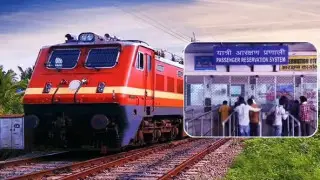
In an effort to catch up to its geopolitical competitor China, India has opened the first phase of its longest expressway, a route connecting Delhi and Mumbai. The 13 billion-dollar project will eventually cut the travel time between the two largest cities in the nation in half, to 12 hours.
India’s infrastructure is decades behind that of its northern neighbour, despite the fact that it is the world’s fastest-growing major economy and will soon be acknowledged as its most populous country.
“Welcome to the Delhi-Vadodara-Mumbai expressway”, a 1,386km route, was announced via a sign over one of the newly constructed four-lane highways.
The 246km first section, which connects the capital with the tourist destination of Jaipur in Rajasthan, was officially opened by the prime minister, Narendra Modi, on Sunday. He said that “such investments in trains, expressways, subway lines, and airports are a key to driving the country’s growth pace, attracting additional investments, and creating new jobs.” He called it a symbol of developing India.
Prime Minister Narendra Modi is expected to open some more major railways, highways, expressways and port projects in the next few months. With 1.3 million employees and one of the largest rail networks in the world, India has to invest heavily in track and rolling stock. To do this, the government is looking to raise private financing.
Beijing has invested hundreds of billions of dollars in infrastructure over many years, and as a result, China now has the greatest high-speed rail network in the world, a comprehensive network of highways, and glittering airports. The construction of India’s first high-speed rail line, a 13 billion-dollar Japanese-funded undertaking between Mumbai and Ahmedabad, is still ongoing but has been hampered by delays in land acquisition and other administrative processes.
Currently under construction, the 1,350 km long, 8 lanes wide (expandable to 12 lanes), access-controlled Delhi-Mumbai Expressway connects Mumbai with New Delhi, the capital of India. On March 8, 2019, Nitin Gadkari, a union minister, formally inaugurated the project in the presence of Sushma Swaraj and Arun Jaitley. A rough estimate of the project’s entire value, including the cost of acquiring land, is 1,00,000 crores (13.1 billion dollars). The Noida International Airport in Jewar will have a 31 km long spur built by the NHAI that will connect to Sector-65 in Faridabad.
The Delhi-Mumbai Expressway will connect the Jawaharlal Nehru Port in Maharashtra with the DND Flyway in Maharani Bagh, Delhi, via Dausa, Kota, Ratlam, Vadodara, and Surat. It travels through the states of Haryana (129 km), Rajasthan (373 km), Madhya Pradesh (244 km), Gujarat (426 km), and Maharashtra (171 km), as well as the Union territory of Delhi (12 km). The expressway’s 1,198 km main route runs solely from Sohna to Virar. It also has two spurs that extend its length to 1,350 km: DND-Faridabad-KMP (59 km) and Virar-JNPT (92 km).
The expressway will initially be 8 lanes wide with a greenfield alignment route in disadvantaged communities, cutting the current 24-hour travel time in half to 12 hours. The centre of the road will be set aside for future expansion, along with room for utilities, a plantation, and public transportation on both sides.
The expressway’s initial width will be 8 lanes, with a greenfield alignment route in disadvantaged communities. This will cut the current 24-hour travel time in half to 12 hours. The centre of the road will be set aside for future expansion, along with room for utilities, a plantation, and public transportation on both sides. This will allow for a total of four extra lanes. This highway will serve as a crucial pillar in the Delhi-Mumbai Industrial Corridor, along with the Western Dedicated Freight Corridor (Western DFC).













Copyright © 2025 Top Indian News
